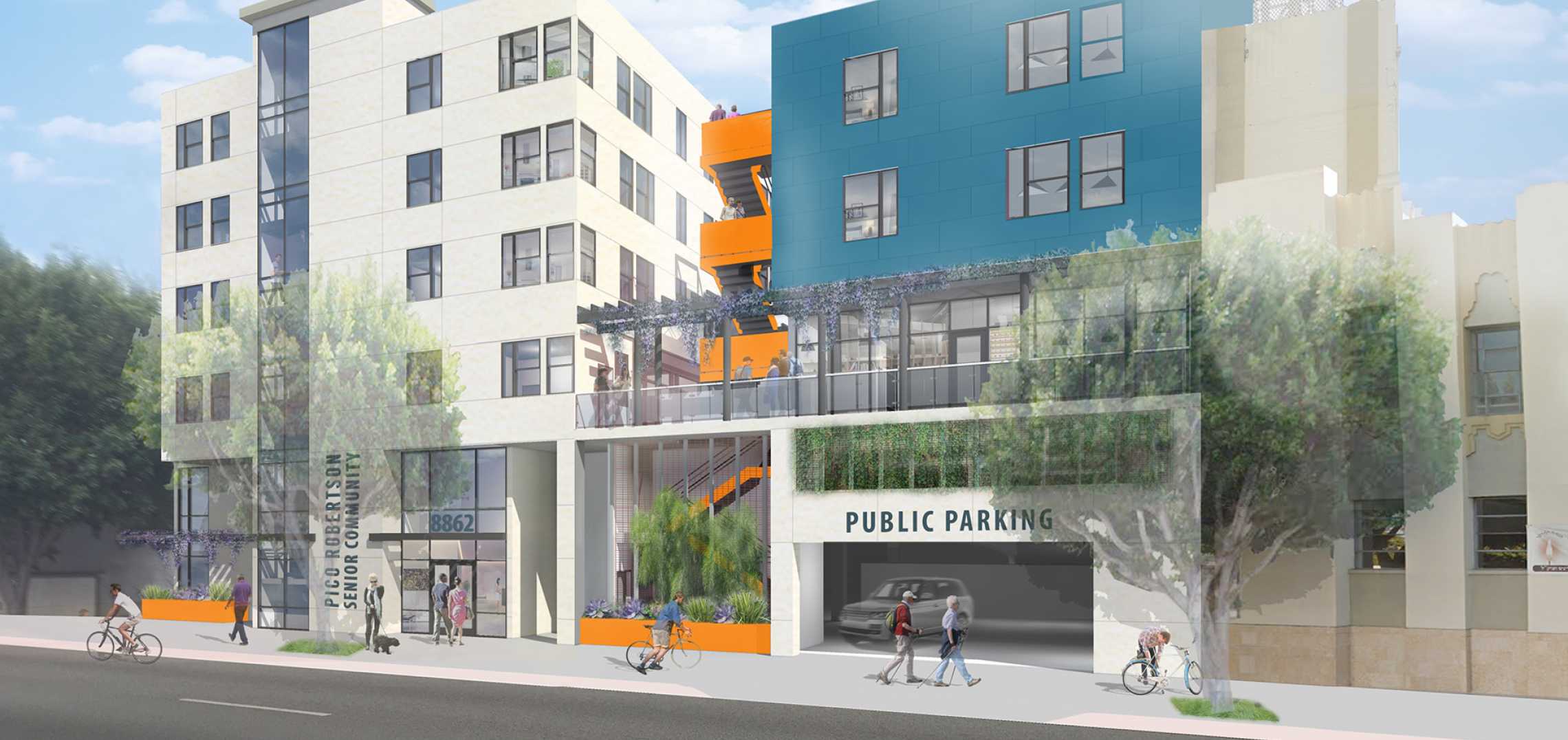Gregor Robertson: Affordable Housing Without A Market Crash?

Table of Contents
Analyzing Gregor Robertson's Affordable Housing Policies
Robertson's strategy to tackle Vancouver's affordable housing shortage relied heavily on increasing housing density and implementing innovative social housing programs.
Density and Zoning Changes
Several key zoning changes were implemented during Robertson's time as mayor, aiming to increase housing density, particularly in areas well-served by public transit.
- Increased height restrictions: Many zoning bylaws were amended to permit taller buildings in specific areas, leading to a higher number of housing units per acre. This increased the overall housing supply but also faced significant community pushback in some neighbourhoods.
- Relaxation of minimum parking requirements: Reducing mandatory parking spaces incentivized developers to build more residential units, as parking is a significant cost factor in construction.
- Incentives for secondary suites: Policies were introduced to simplify the approval process for secondary suites, increasing the number of rental units in existing single-family homes.
While these changes aimed to increase housing supply and affordability, the effect was mixed. While some areas experienced increased housing density, it's unclear whether this led to a significant decrease in housing costs. The impact varied considerably across neighborhoods, with some experiencing a substantial increase in housing options while others saw limited change. The success of these initiatives is still under debate, with some critics arguing that they did not adequately address the affordability crisis.
Social Housing Initiatives
Robertson's administration also prioritized the development of social housing, recognizing its crucial role in providing affordable homes for low-income residents.
- Increased funding: Significant investments were made in social housing projects, leveraging various funding sources, including federal and provincial grants.
- Partnerships with private developers: The city actively collaborated with private developers to incorporate affordable housing units into larger developments. This was done through incentives and inclusionary zoning requirements.
- Focus on diverse housing models: The city explored various social housing models, including co-ops, supportive housing, and modular construction, to cater to different needs.
Despite these efforts, the number of social housing units built during Robertson's tenure fell short of the overall need. Funding limitations, lengthy approval processes, and land scarcity proved challenging. The long-term sustainability of these partnerships with private developers also needs further evaluation.
Inclusionary Zoning
Inclusionary zoning (IZ), mandating a percentage of affordable units in new developments, was another key policy.
- Implementation challenges: The implementation of IZ faced considerable resistance from developers who argued that it reduced profitability and made projects financially unviable.
- Percentage of affordable units: The mandated percentage of affordable units varied depending on the location and project type. Determining the appropriate percentage that would effectively increase supply while remaining economically feasible was a significant challenge.
- Affordability concerns: Critics argued that the definition of “affordable” used in IZ policies didn't adequately address the needs of the most vulnerable populations.
Inclusionary zoning, while well-intentioned, proved to be a complex tool with varying degrees of effectiveness. It often struggled to meaningfully address the deep affordability issues faced by Vancouverites.
Assessing the Impact on the Vancouver Housing Market
Analyzing the impact of Robertson's policies on Vancouver's housing market requires a careful examination of housing prices, affordability, and market stability.
Changes in Housing Prices and Affordability
During Robertson's tenure, housing prices in Vancouver continued their upward trajectory. While the rate of increase might have been slightly moderated in certain sectors, affordability continued to decline for many income groups.
- Average home prices: Data show that average home prices continued to climb, albeit at varying paces depending on the type of housing and neighborhood.
- Rental costs: Rental costs also escalated sharply during this period, making it increasingly difficult for many residents to find affordable rental housing.
- Affordability indices: Various affordability indices, such as the percentage of income required to meet housing costs, showed a continuous decline in affordability during this period.
The increase in housing supply brought about by Robertson's policies appears to have been insufficient to counter the strong demand, further pushing up prices.
Market Stability and Volatility
It's difficult to definitively attribute specific market fluctuations to Robertson's policies alone. Many external factors influence Vancouver's real estate market.
- Global economic factors: International capital flows, interest rate changes, and global economic trends play a significant role in influencing housing prices.
- Speculation: Speculation remains a significant factor in Vancouver’s real estate market, potentially exacerbating price volatility.
- Limited supply: The fundamental issue of a mismatch between housing supply and demand persisted throughout Robertson's tenure and contributed to market volatility.
While there's no clear evidence suggesting Robertson's policies dramatically increased market volatility, neither did they definitively stem the tide of rapidly rising housing costs.
Impact on Different Neighborhoods
The impact of Robertson's policies varied significantly across different neighborhoods in Vancouver.
- Gentrification concerns: In some areas, the increase in density and development led to concerns about gentrification, pushing out long-term residents and reducing affordability.
- Uneven development: The benefits of increased housing supply weren't evenly distributed across the city. Some neighborhoods saw significant changes, while others experienced minimal impact.
- Neighborhood character: The increased density, while addressing the housing supply issue, also raised concerns about the preservation of neighborhood character and community identity in some areas.
Alternative Approaches and Lessons Learned
Examining strategies in other cities and identifying potential improvements is crucial for shaping future affordable housing policy in Vancouver.
Comparison with Other Cities
Cities like Vienna, Austria, and Singapore have implemented successful affordable housing programs with different approaches.
- Vienna's social housing model: Vienna's large-scale public housing program provides affordable and high-quality housing for a significant portion of its population.
- Singapore's public housing authority: Singapore’s Housing Development Board (HDB) successfully provides affordable and quality public housing to a majority of its citizens.
These models highlight the potential effectiveness of large-scale public investment and long-term planning in addressing housing affordability.
Recommendations for Future Policy
To improve future affordable housing strategies in Vancouver, several key recommendations emerge from this analysis:
- Increased investment in social housing: Significant increases in public funding and streamlining of development processes are vital for ensuring a sufficient supply of social housing.
- Innovative housing models: Exploring and implementing innovative housing models, such as modular construction and co-housing, can accelerate the creation of affordable units.
- Strengthened inclusionary zoning: Re-evaluating and refining IZ policies to address the criticisms and improve their effectiveness in creating genuinely affordable housing is crucial.
- Community engagement: Meaningful community engagement throughout the planning and development phases can help mitigate concerns about density and gentrification while ensuring equitable distribution of affordable housing across neighborhoods.
Conclusion: Gregor Robertson's Legacy and the Path to Affordable Housing
Gregor Robertson's legacy in tackling Vancouver's affordable housing crisis is complex. While his administration made significant efforts to increase housing supply through density increases, social housing initiatives, and inclusionary zoning, the impact on affordability was less conclusive. His policies, while laudable in their intent, did not fully solve the housing crisis. The balance between increasing affordable housing and maintaining market stability remains a significant challenge. Successfully navigating this complex issue necessitates a multifaceted approach encompassing substantial public investment, innovative housing solutions, and effective community engagement. The ongoing need for innovative affordable housing solutions in Vancouver and other cities requires ongoing discussion and research into strategies that minimize market disruptions while ensuring access to safe and affordable housing for all income levels. The pursuit of effective affordable housing policies must continue to be a priority, demanding collaborative efforts from all levels of government and the private sector.

Featured Posts
-
 G7 Meeting Silence On Tariffs Despite Looming Concerns
May 27, 2025
G7 Meeting Silence On Tariffs Despite Looming Concerns
May 27, 2025 -
 Sexting Scandal Cheryl Hines Gives Rfk Jr An Ultimatum
May 27, 2025
Sexting Scandal Cheryl Hines Gives Rfk Jr An Ultimatum
May 27, 2025 -
 Nine Perfect Strangers Siren And More Your Weekend Streaming Guide
May 27, 2025
Nine Perfect Strangers Siren And More Your Weekend Streaming Guide
May 27, 2025 -
 Top 3 Underrated Movies On Hbo Max For Your Weekend March 14 16
May 27, 2025
Top 3 Underrated Movies On Hbo Max For Your Weekend March 14 16
May 27, 2025 -
 Kraen Rok Za Rusi A Tramp Kje Vovede Sanktsii Bez Primir E Do April
May 27, 2025
Kraen Rok Za Rusi A Tramp Kje Vovede Sanktsii Bez Primir E Do April
May 27, 2025
